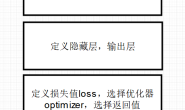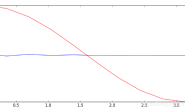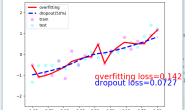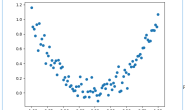目录
-
- 1. 前言
- 2. 数据预处理——CoraData类的定义
- 3. GCN层定义
- 4. 模型构建
- 5. 模型训练与测试
1. 前言
这次的任务是节点分类。使用的是Cora数据集,该数据集由2708篇论文,及它们之间的引用关系构成的5429条边组成。这些论文根据主题被划分为7类,分别是神经网络、牵强化学习、规则学习、概率方法、遗传算法、理论研究、案例相关。每篇论文的特征是通过词袋模型得到的,维度为1433,每一维表示一个词,1表示该词在这篇文章中出现过,0表示未出现。 导入需要的包:
import itertools
import os
import os.path as osp
import pickle
import urllib
from collections import namedtuple
import numpy as np
import scipy.sparse as sp
import torch
import torch.nn as nn
import torch.nn.functional as F
import torch.nn.init as init
import torch.optim as optim
import matplotlib.pyplot as plt
%matplotlib inlin
2. 数据预处理——CoraData类的定义
CoraData类用来对数据进行预处理,主要包括下载数据、规范化数据并进行缓存以备重复使用。
###################################################################################
# 数据准备 #
###################################################################################
## 用于保存处理好的数据
Data = namedtuple('Data', ['x', 'y', 'adjacency', 'train_mask', 'val_mask','test_mask'])
class CoraData(object):
download_url = "http://github.com/kimiyoung/planetoid/raw/master/data"
filenames = ["ind.cora.{}".format(name) for name in ['x', 'tx', 'allx', 'y', 'ty', 'ally', 'graph','test.index']]
######### 数据准备部分——数据下载 ##################################
def __init__(self, data_root = "cora", rebuild = False):
"""
包括数据下载、处理、加载等功能
当数据的缓存文件存在时,使用缓存文件,否则将下载、处理、并缓存到磁盘
Args:
-------
data_root: string, optional
存放数据的目录,原始数据路径:{data_root}/raw
缓存存放路径:{data_root}/processed_cora.pkl
rebuild: boolean, optional
是否需要重新构建数据集,当设为True时,如果缓存数据存在也会重建数据
"""
self.data_root = data_root
save_file = osp.join(self.data_root, "processed_cora.pkl")
if osp.exists(save_file) and not rebuild:
print("Using Cached file:{}".format(save_file))
self._data = pickle.load(open(save_file, "rb"))
else:
self.maybe_download()
self._data = self.process_data()
with open(save_file, "wb") as f:
pickle.dump(self.data, f)
print("Cached file: {}".format(save_file))
@property
def data(self):
"""
返回Data数据对象,包括x,y,adjacency, train_mask, valid_mask, test_mask
"""
return self._data
def maybe_download(self):
save_path = osp.join(self.data_root, "raw")
for name in self.filenames:
if not osp.exists(osp.join(save_path, name)):
self.download_data("{}/{}".format(self.download_url, name), save_path)
@staticmethod
def download_data(url, save_path):
"""
数据下载工具,当原始数据不存在时将会进行下载
"""
if not osp.exists(save_path):
os.makedirs(save_path)
data = urllib.request.urlopen(url)
filename = osp.basename(url)
with open(osp.join(save_path, filename), 'wb') as f:
f.write(data.read())
return True
######### 下面是数据处理的部分 ##################################
def process_data(self):
"""
处理数据,得到节点特征和标签、邻接矩阵、训练集、验证集以及测试集
"""
print("Process data ...")
_, tx, allx, y, ty, ally, graph, test_index = [self.read_data(osp.join(self.data_root,"raw", name)) for name in self.filenames]
train_index = np.arange(y.shape[0]) #
val_index = np.arange(y.shape[0], y.shape[0]+500)
sorted_test_index = sorted(test_index)
#将训练集和测试集结合得到总的数据集
x = np.concatenate((allx, tx), axis = 0)
# 将训练集和测试集结合得到总的数据集,并且得到标签(ally和ty实质上是y的向量
y = np.concatenate((ally, ty), axis = 0).argmax(axis = 1)
x[test_index] = x[sorted_test_index]
y[test_index] = y[sorted_test_index]
num_nodes = x.shape[0]
train_mask = np.zeros(num_nodes, dtype = np.bool)
val_mask = np.zeros(num_nodes, dtype = np.bool)
test_mask = np.zeros(num_nodes, dtype = np.bool)
train_mask[train_index] = True
val_mask[val_index] = True
test_mask[test_index] = True
adjacency = self.build_adjacency(graph)
print("Node's feature shape: ", x.shape)
print("Node's label shape: ", y.shape)
print("Adjacency's shape: ", adjacency.shape)
print("Number of training nodes: ", train_mask.sum())
print("Number of validation nodes: ", val_mask.sum())
print("Number of test nodes: ", test_mask.sum())
return Data(x=x, y=y, adjacency= adjacency, train_mask=train_mask, val_mask=val_mask, test_mask=test_mask)
@staticmethod
def build_adjacency(adj_dict):
"""
根据邻接列表创建邻接矩阵
"""
edge_index = []
num_nodes = len(adj_dict)
for src,dst in adj_dict.items():
edge_index.extend([src, v] for v in dst)
edge_index.extend([v, src] for v in dst)
# 由于上述得到的结果中存在重复的边,删掉这些重复的边
edge_index = list(k for k, _ in itertools.groupby(sorted(edge_index)))
edge_index = np.asarray(edge_index)
adjacency = sp.coo_matrix((np.ones(len(edge_index)), (edge_index[:, 0], edge_index[:, 1])),shape=(num_nodes, num_nodes), dtype = "float32")
return adjacency
@staticmethod
def read_data(path):
"""
使用不同的方式读取原始数据以进一步处理
"""
name = osp.basename(path)
if name == "ind.cora.test.index":
out = np.genfromtxt(path, dtype = "int64")
return out
else:
out = pickle.load(open(path, 'rb'), encoding = "latin1")
out = out.toarray() if hasattr(out, "toarray") else out
return out
# 规范化邻接矩阵
def normalization(adjacency):
"""
计算 L=D^-0.5 * (A+I) * D^-0.5
"""
adjacency += sp.eye(adjacency.shape[0]) #增加自连接
degree = np.array(adjacency.sum(1))
d_hat = sp.diags(np.power(degree, -0.5).flatten())
return d_hat.dot(adjacency).dot(d_hat).tocoo()
# 参数设置
device = "cuda" if torch.cuda.is_available() else "cpu"
# 加载数据,并转换为torch.Tensor
print('='*20)
print('加载数据')
dataset = CoraData().data
x = dataset.x / dataset.x.sum(1, keepdims = True) #归一化数据,使得每一行和为1
tensor_x = torch.from_numpy(x).to(device)
tensor_y = torch.from_numpy(dataset.y).to(device)
tensor_train_mask = torch.from_numpy(dataset.train_mask).to(device)
tensor_val_mask = torch.from_numpy(dataset.val_mask).to(device)
tensor_test_mask = torch.from_numpy(dataset.test_mask).to(device)
normalization_adjacency = normalization(dataset.adjacency) #规范化邻接矩阵
indices = torch.from_numpy(np.asarray([normalization_adjacency.row, normalization_adjacency.col]).astype('int64')).long()
values = torch.from_numpy(normalization_adjacency.data.astype(np.float32))
tensor_adjacency = torch.sparse.FloatTensor(indices, values, (2708, 2708)).to(device)
Python namedtuple namedtuple是python元组的升级版本——具名元组。类似于简化定义一个类及其属性。 在这里,数据集被预处理为包括以下几个部分的数据形式:
- x:节点特征,维度为2708×1433;
- y:节点对应的标签,包括7个类别;
- adjacency:邻接矩阵,维度为2708×2708,类型为
scipy.sparse.coo_matrix; - train_mask、val_mask、test_mask:与节点数相同的掩码,用于划分训练集、验证集、测试集。
数据集:https://github.com/kimiyoung/planetoid 下载的数据集中:
tx:测试实例的特征向量ty:测试实例的标签的one-hot编码test.index:the indices of test instances ingraph, for the inductive settingally:allx中所有实例的标签allx, the feature vectors of both labeled and unlabeled training instances (a superset of x)graph, 一个字典,其格式是{index: [index_of_neighbor_nodes]}
3. GCN层定义
根据GCN的定义X′=σ(L~symXW)来定义GCN层。由于邻接矩阵是稀疏矩阵,为了提高运算效率,使用稀疏矩阵乘法。
###################################################################################
# GCN层定义 #
###################################################################################
class GraphConvolution(nn.Module):
def __init__(self, input_dim, output_dim, use_bias = True):
"""
图卷积:L*X*\theta
Args:
-------
input_dim: int
节点输入特征的维度
output_dim: int
输出特征维度
use_bias: bool, optional
是否使用偏置
"""
super(GraphConvolution, self).__init__()
self.input_dim = input_dim
self.output_dim = output_dim
self.use_bias = use_bias
self.weight = nn.Parameter(torch.Tensor(input_dim, output_dim))
if self.use_bias:
self.bias = nn.Parameter(torch.Tensor(output_dim))
else:
self.register_parameter('bias', None)
self.reset_parameters()
def reset_parameters(self):
init.kaiming_uniform_(self.weight)
if self.use_bias:
init.zeros_(self.bias)
def forward(self, adjacency, input_feature):
"""
邻接矩阵是系数矩阵,因此在计算时使用稀疏矩阵乘法
Args:
-------
adjacency: torch.sparse.FloatTensor
邻接矩阵
input_feature: torch.Tensor
输入特征
"""
support = torch.mm(input_feature, self.weight)
output = torch.sparse.mm(adjacency, support)
if self.use_bias:
output += self.bias
return output
4. 模型构建
有了数据和GCN层,就可以构建模型进行训练了。我们定义一个两层的GCN,其中输入维度为1433,隐藏层维度设置为16,最后一层GCN将输出维度变为类别7,激活函数使用ReLU。
###################################################################################
# 模型构建 #
###################################################################################
class GcnNet(nn.Module):
"""
定义一个包含两层GraphConvolution的模型
"""
def __init__(self, input_dim = 1433):
super(GcnNet,self).__init__()
self.gcn1 = GraphConvolution(input_dim, 16)
self.gcn2 = GraphConvolution(16, 7)
def forward(self, adjacency, feature):
h = F.relu(self.gcn1(adjacency, feature))
logits = self.gcn2(adjacency, h)
return logits
#超参数定义
learning_rate = 0.1
weight_decay = 5e-4
epoches = 200
# 模型定义(模型实例化、损失函数定义、优化器定义)
model = GcnNet().to(device)
criterion = nn.CrossEntropyLoss().to(device)
optimizer = optim.Adam(model.parameters(), lr = learning_rate, weight_decay = weight_decay)
5. 模型训练与测试
###################################################################################
# 模型训练与测试 #
###################################################################################
def train():
loss_history = []
val_acc_history = []
train_acc_history = []
model.train()
train_y = tensor_y[tensor_train_mask]
for epoch in range(epoches):
logits = model(tensor_adjacency, tensor_x) #前向传播
train_mask_logits = logits[tensor_train_mask] # 只选择训练节点进行监督
loss = criterion(train_mask_logits, train_y) # 计算损失值
optimizer.zero_grad()
loss.backward() # 反向传播计算参数的梯度
optimizer.step() # 使用优化方法进行梯度更新
train_acc = test(tensor_train_mask) # 计算当前模型在训练集上的准确率
val_acc = test(tensor_val_mask) # 计算当前模型在验证集上的准确率
# 记录训练过程中的损失值和准确率的变化,用于画图
loss_history.append(loss.item())
train_acc_history.append(train_acc.item())
val_acc_history.append(val_acc.item())
print("Epoch {:03d}: Loss {:.4f}, TrainAcc {:.4f}, ValAcc {:.4f}".format(epoch, loss.item(), train_acc.item(), val_acc.item()))
return loss_history, train_acc_history, val_acc_history
def test(mask):
model.eval()
with torch.no_grad():
logits = model(tensor_adjacency, tensor_x)
test_mask_logits = logits[mask]
predict_y = test_mask_logits.max(1)[1]
accuracy = torch.eq(predict_y, tensor_y[mask]).float().mean()
return accuracy
def plot_loss_with_acc(loss_history, val_acc_history):
fig = plt.figure()
ax1 = fig.add_subplot(111)
ax1.plot(range(len(loss_history)), loss_history,
c=np.array([255, 71, 90]) / 255.)
plt.ylabel('Loss')
ax2 = fig.add_subplot(111, sharex=ax1, frameon=False)
ax2.plot(range(len(val_acc_history)), val_acc_history,
c=np.array([79, 179, 255]) / 255.)
ax2.yaxis.tick_right()
ax2.yaxis.set_label_position("right")
plt.ylabel('ValAcc')
plt.xlabel('Epoch')
plt.title('Training Loss & Validation Accuracy')
plt.show()
############# 开始训练 ###################
print('='*15)
print('开始训练')
loss, train_acc, val_acc = train()#每个epoch 模型在训练集上的loss 和验证集上的准确率
# 可视化展示结果
plot_loss_with_acc(loss, val_acc)
#计算最后训练好的模型在测试集上准确率
test_acc = test(tensor_test_mask)
print("Test accuarcy: ", test_acc.item())
结果:
 在测试集上,有80%的准确率。
在测试集上,有80%的准确率。




